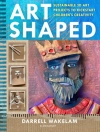Because content and language learning go hand in hand
New content standards integrate content and language in ways prior standards have never done. That’s why it’s so critically important that teachers attend to both content and language development when introducing new subject matter, especially for English learners. Here’s your opportunity to get started tomorrow and every day thereafter: Alison Bailey and Margaret Heritage’s all-new Progressing Students’ Language Day by Day.
What’s so utterly ground-breaking about this book is Bailey and Heritage’s Dynamic Language Learning Progression (DLLP) process: research-based tools for obtaining much deeper insight into a student’s language progress, then for identifying the most appropriate instructional steps to elevate language proficiency and content knowledge. Step by step, Bailey and Heritage describe how to
- Engage with students to advance their development of sophisticated, high-leverage language features for explaining content
- Use the DLLP approach to formative assessment, then plan your teaching in response to assessment evidence
- Examine words, sentences, and discourse –the three dimensions of language that are part of the DLLP process for cultivating language development
- Discover how leadership support and communities of practice (Co Ps) can facilitate a successful and sustainable implementation of the DLLP process
Listen more closely and uncover new ways to advance content learning with Progressing Students’ Language Day by Day directly by your side.
’Alison Bailey and Margaret Heritage open our eyes to the often invisible and context-specific language demands embedded in content learning. Understanding the ubiquitous and highly influential role of language in learning takes time and effort but leads to transformative practice. Progressing Students’ Language Learning Day by Day offers an insightful and concrete framework to begin this transformation.’— Paola Uccelli, Professor of Education,
Harvard University
Spis treści
Foreword by Paola Uccelli
Preface
Acknowledgments
About the Authors
About the Contributors
PART I. LAYING THE GROUNDWORK
Chapter 1. Definitions and Contexts
Chapter 2. What Is the DLLP Approach?
Appendix 2A: Research Methods and Protocols
Appendix 2B: Directions for Teachers’ Tool for Documenting Language Features in the Classroom for Formative Purposes
Chapter 3. Formative Assessment
PART II. FEATURES OF THE DLLP APPROACH
Chapter 4. Word Features of the DLLP Approach
Appendix 4A: Practice Finding the “Best Fit” on Sophistication of Topic-Related Vocabulary
Appendix 4B: Student Self-Assessment DLLP Graphic
Appendix 4C: Practice Finding the “Best Fit” on Sophistication of Verb Forms
Appendix 4D: Practice Finding the “Best Fit” on Expansion of Word Groups
Chapter 5. Sentence Features of the DLLP Approach
Appendix 5A: Practice Finding the “Best Fit” on Sophistication of Sentence Structure
Chapter 6. Discourse Features of the DLLP Approach
Appendix 6A: Practice Finding the “Best Fit” on Coherence/Cohesion
Appendix 6B: Discourse Connector Lists
Appendix 6C: Practice Finding the “Best Fit” on Establishment of Advanced Relationships Between Ideas
Appendix 6D: Practice Finding the “Best Fit” on Stamina
Appendix 6E: Practice Finding the “Best Fit” on Perspective-Taking
Appendix 6F: Written Language Features of the DLLP Approach
PART III. LEADING LANGUAGE AND CONTENT LEARNING
Chapter 7. Leadership and Communities of Practice to Support DLLP Implementation
Appendix 7A: Agendas for Communities of Practice
Index
O autorze
Margaret Heritage is an independent consultant in education. For her entire career, her work has spanned both research and practice. In addition to spending many years in her native England as a practitioner, a university teacher, and an inspector of schools, she had an extensive period at the University of California at Los Angeles (UCLA), first as principal of the laboratory school of the Graduate School of Education and Information Students and then as an Assistant Director at UCLA’s National Center for Research on Evaluation, Standards and Student Testing. She has also taught courses in the Departments of Education at UCLA and Stanford University. She is a regular presenter at conferences across the United States and internationally. Her most recent book with Corwin, co-authored with Christine Harrison, is The Power of Assessment for Learning: Twenty Years of Research and Practice in UK and US Classrooms.












